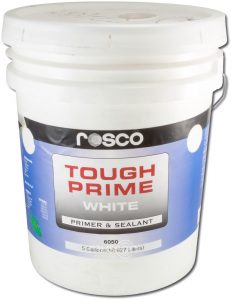Home Ideas: How to Paint PVC?
Summary
– Step 1: Clean and degrease the PVC surface
– Step 2: Before applying the undercoat on PVC
– Step 3: Apply an undercoat
– Step 4: Paint the PVC
PVC is a smooth material that can be painted provided that the surface is prepared correctly, and the right products are used.
You can choose to apply acrylic paint or glycerol paint on PVC.
However, you will need to apply an undercoat (or primer) so that the paint does not come off once dry. PVC primer, which adheres to a smooth, non-absorbent surface, allows the paint to adhere correctly.

Before painting PVC, clean the surface, sand it lightly and apply a particular “Plastic and PVC” undercoat.
Warning: PVC undercoats and paints are not suitable for painting certain PVC types (soft plastic, Plexiglas…); check that the products you use are designed for the kind of PVC surface you wish to paint.
Materials for painting PVC
– Undercoat for plastic and PVC $9 approx.
– Acetone From $3.50/L
– Sandpaper Approximately $5 per 3 sheets
– Rabbit’s foot roll $3 approx.
– White Vinegar About $1
– Household gloves Starting at $1
Step 1. Clean and degrease the PVC surface
Clean the PVC surface before painting:
– Use methylated spirits or acetone. In both cases, wear household gloves to protect your hands and ventilate the room.
– Degrease the surface by rubbing it with a cloth soaked in acetone or methylated spirits.
– PVC is sometimes covered with a layer of silicone release agent. To clean the silicone on the PVC :
◦ Mix white vinegar and water in a container.
◦ Degrease the PVC by rubbing with a sponge soaked in the mixture.
– Allow drying ultimately.
Step 2. Sand the PVC before applying the undercoat
With the PVC surface smooth, sand it with a fine-grit sandpaper (80 to 100).
– Lightly sand the surface in circular motions.
– Do not press too hard and do not insist too much on the same spot so as not to dig a hole into the surface; the goal is to increase the undercoat’s adhesion.
What tools are available to apply the undercoat on PVC?
You can apply the undercoat with a brush or roller.
– If you apply the undercoat with a brush, choose a brush adapted to the type of undercoat you are using (acrylic undercoat, glycerol undercoat).
◦ Acrylic paint brushes have a blue handle.
◦ Brushes for painting with glycerol paint have a red handle.
– If you apply the undercoat with a roller, choose a short-bristle roller (10 mm), adapted to the type of undercoat you are using (acrylic, glycerol).
◦ Acrylic paint rollers have a synthetic fibre sleeve.
◦ The rollers for painting with glycerol paint have a sleeve made of natural or mixed fibres.
Apply an undercoat
Open the jar and stir the product without whipping with a stick, moving from the center to the jar’s edges.
– If you use a brush to paint PVC :
◦ Hold the brush vertically.
◦ Dip the bristles of the brush into the jar to load it with the product.
◦ Wring it out on the edge of the jar.
– If you are using a roller to paint PVC :
◦ Pour the product into a paint tray.
◦ Dip the roller into the tray, without fully immersing it, to load it.
◦ Wring out the roller by running it over a wringer grid.
– Apply the undercoat in vertical strips.
– Cross the passes by painting horizontal stripes.
– Allow drying before applying paint.
Tip: Before painting, remember to protect the floor with plastic sheeting or newspaper.
Step 3. Paint the PVC
Once the undercoat is dry, apply the paint. You can paint PVC with a brush, roller or spray gun.
– The brush makes it easy to paint small objects or complex shapes.
– The roller allows you to apply the paint quickly, leaving few traces.
– If you are painting a large area, apply the paint with a spray gun to achieve a streak-free result.
That’s it. You are now done with painting PVC. Please, remember to share your comments in the section below.
